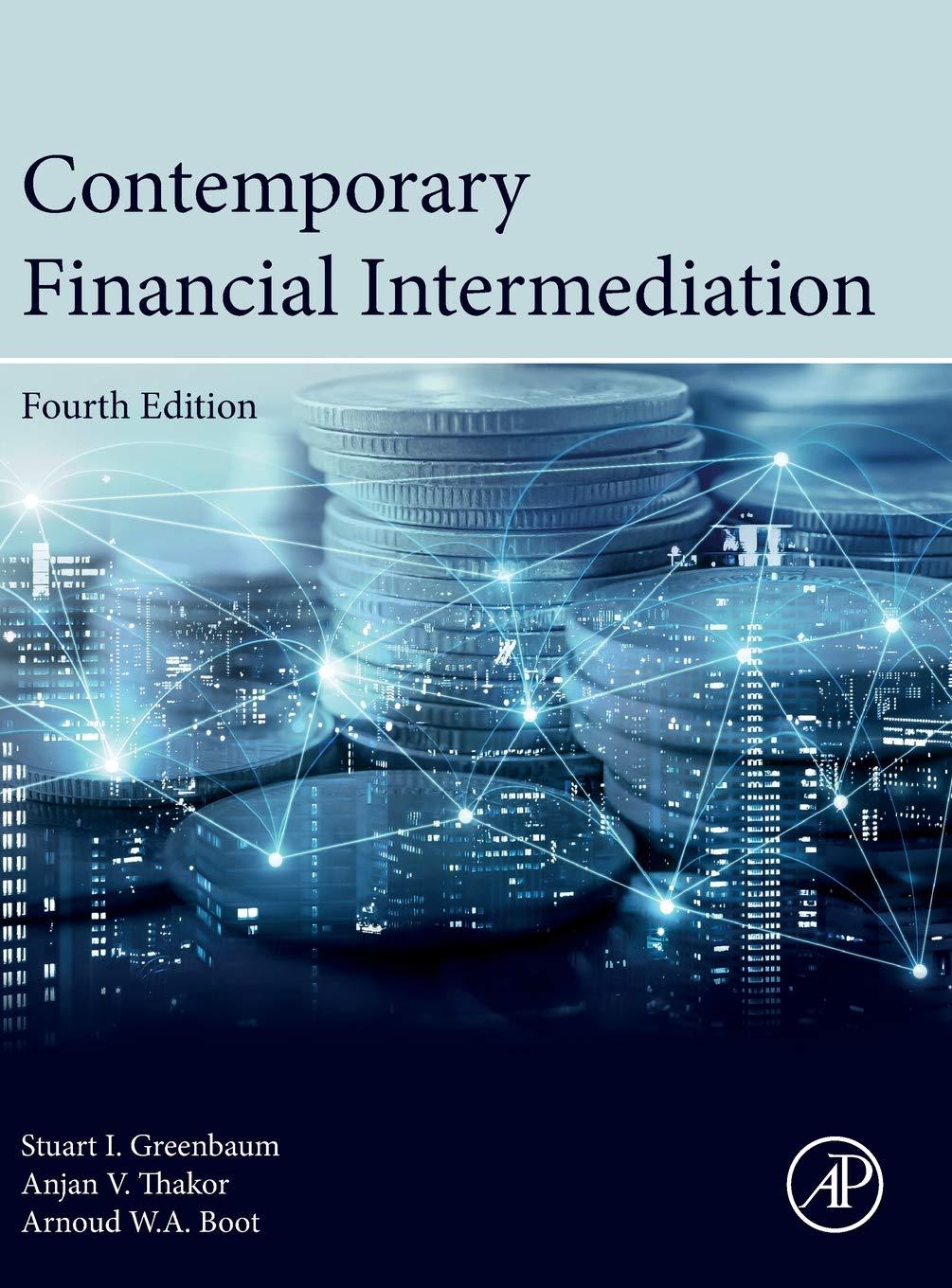1.Suppose there is a bank that can make a loan of $100 at t = 0. The...
Question:
1. Suppose there is a bank that can make a loan of $100 at t = 0. The loan will repay at t = 1. The loan finances a project that a borrower can invest in. The borrower can choose one out of three mutually exclusive projects: G, N, and n, each of which requires a $100 investment at t = 0 and produces a random payoff of t = 1. Project G yields a payoff of $150 with probability (w.p.) 0.9 and zero w.p. 0.1. Projects N and n both yield $150 w.p. 0.6 and zero w.p. 0.4. Project N produces a (noncontractible) private benefit of $10 for the borrower, whereas project n gives the borrower a private benefit of only $6. These private benefits can be viewed as prerequisites the borrower can consume which are associated with a given project or cash flow diversions from the project that cannot be controlled/prevented by the bank.
The bank can monitor the borrower’s project choice at a cost of $6. This is the monetary equivalent of what may be a nonpecuniary cost of the effort involved in monitoring what project the borrower is choosing. Bank monitoring can prevent the borrower from choosing Project N, but not project n. That is, despite bank monitoring, the borrower can choose either project G or project n, and the bank would not be able to observe which project was chosen, The bank can raise financing for the loan with a mix of deposits and equity. Assume for simplicity, that all of the bank’s equity is “inside equity,” that is, it is provided by the bank manager who incurs the cost of monitoring the loan. Depositors cannot observe whether the bank monitored the loan.
The riskless interest rate is 1%. Everybody is risk neutral, so both shareholders and depositors require an expected return of 1%. Banks are relatively scarce, so that they can charge the borrower whatever interest rate they want. The bank faces a tax rate of 30% on its net income of t = 1. For simplicity, assume that the depositors and the borrower pay no taxes. 16 Deposits are available to the bank in whatever quantity it desires as long as depositors are promised an expected return of 1%. Similarly, the bank can put up as much inside equity as needed, as long as shareholders are promised an expected return of at least 1%.
What should be the bank’s capital structure?
Step by Step Answer:

Contemporary Financial Intermediation
ISBN: 9780124052086
4th Edition
Authors: Stuart I. Greenbaum, Anjan V. Thakor, Arnoud Boot





